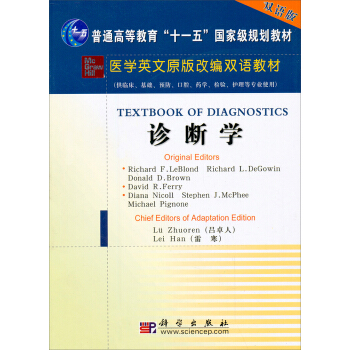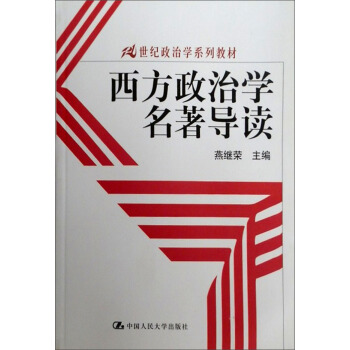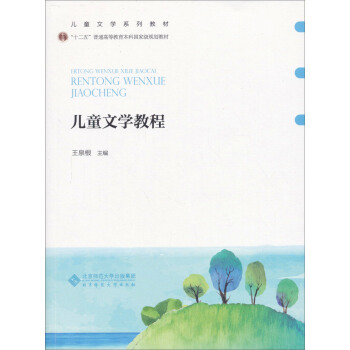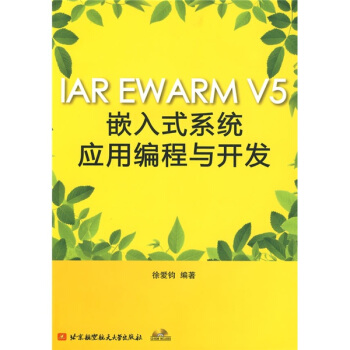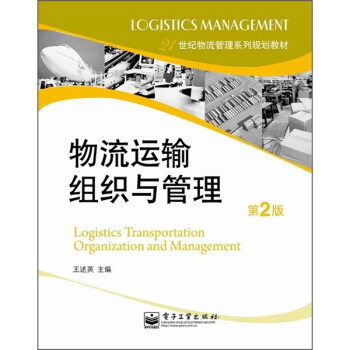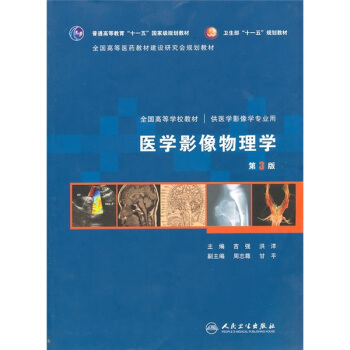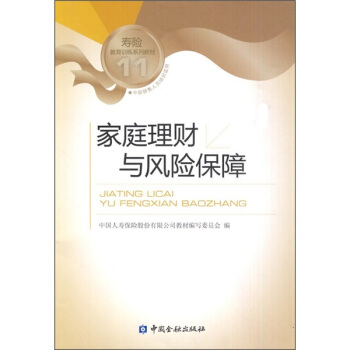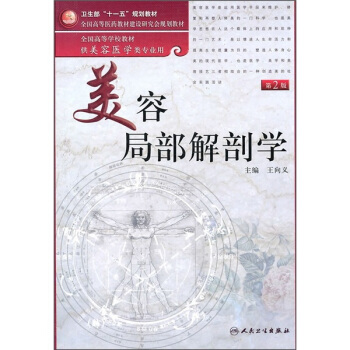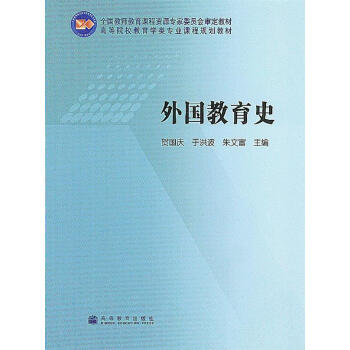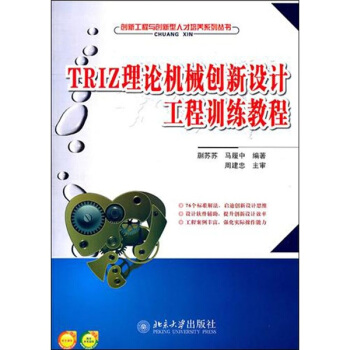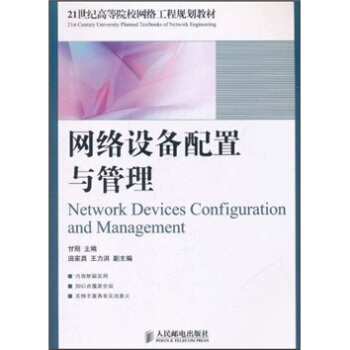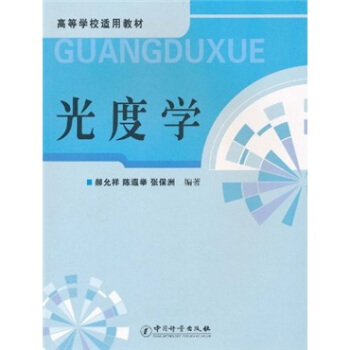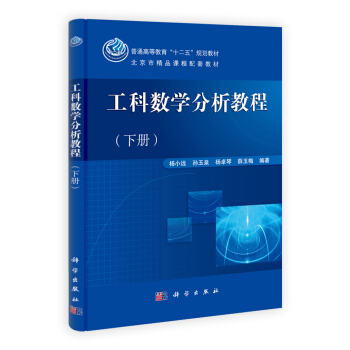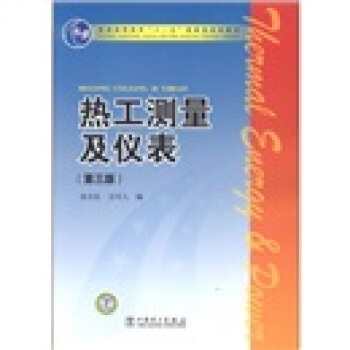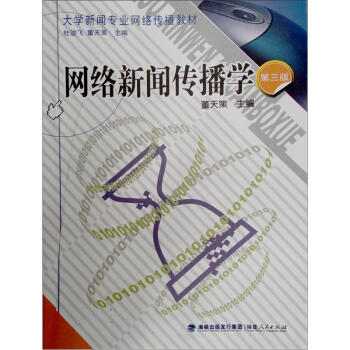

具体描述
内容简介
《跨文化交际视听说》的编写宗旨是以影视片段、相关文章和交际案例等视听素材为载体,通过视听、阅读,以及师生之间、生生之间的口语交互活动来促进跨文化理解、增强跨文化意识。本书内涵丰富,集知识性和趣味性为一体,可作为大学生跨文化交际课程教材,也可供从事跨文化交际实践的人们自学之用。目录
Part Ⅰ Basic ConceptsChapter 1 Culture 9
Chapter 2
Communication 21
Chapter 3 Intercultural Communication 34
Part Ⅱ Cultural Value Orientations
Chapter 4 Klucldaohn and Strodtbecks Model 51
Chapter 5 Hofstedes Cultural Dimensions 64
Chapter 6 Halls Culture Context Model 80
Part Ⅲ Verbal Communication
Chapter 7 Cultural Connotation in Language 91
Chapter 8 Norms of Social Interaction 107
Part Ⅳ Nonverbal Communication
Chapter 9 Body Language 125
Chapter 10 Time 139
Chapter 11 Space 153
Part Ⅴ Barriers and Bridges
Chapter 12 Ethnocentrism and Stereotypes 165
Chapter 13 Culture Shock and Adaptation 182
Chapter 14 Acculturation and Identity 198
Part Ⅵ Contexts of Intercultural Communication
Chapter 15 Education Context 213
Chapter 16 Business Context 225
References
Key for Reference
精彩书摘
His deskmate,a student from Japan,shook his head.“Is it necessary to protest over such a minor issue?I can tolerate this noise.And there are some Japanese friends of mine in Class 5.I don’t want to make my friends unhappy just because of their laughter.”Another Japanese girl stood up,“Let me close our door.Although that will make it hotter,it will be quieter.”
She was stopped by a French student.“Why should we close our door and suffer from the heat?Class 5 should ClOSe t11eir door in order not to bother other classes.”
A few students from Africa suggested,“Why not strike our desks like drums to protest?”
A girl from Russia agreed.“Our class could also laugh together to let them know what the noise sounds like.”
Two Korean students whispered to each other,“Western students really have a hot temper. They just donk know how to stay calm.How could we get along well with other classes if we cant control ourselves?”
A Hungarian girl happened to overhear their comments.She disagreed,“I dont understand you Asians.You wont protest even when your rights have been violated.”
More laughter came from Class 5.Stephen stood up,“No matter what you think about it, Im going to protest.”He went to Class 5 and asked,“How happy you must be today]May we share in your happiness?”Laughter stopped.After a while,Class 5 closed their door.
Stephen came back satisfied and told his Japanese classmates,“Now you Asians can enjoy the peace won by US Westerners.”After the class was over,a few European students from Class 5 came to apologize to me.They weren’t aware that their happy laughter might have bothered Class 4.The Japanese students from Class 5,however,adopted a Chinese nickname for Stephen “fin jin ji jiao”(people who haggle over every ounce).
前言/序言
随着全球化进程的深入中国与国际接轨的步伐不断加怏,中国与世界的跨文化交际不仅关系到国家的经济发展和文化交流,对国家形象的建立、国际关系的维护和国际地位的提升都起着举足轻重的作用,跨文化交际人才培养成为21世纪人才培养的一项至关重要的任务。为了迎接时代的挑战、满足社会对人才的渴求,跨文化交际能力的培养已被写入教育部最新制定的《高等学校英语专业教学大纲》;2007年教育部颁布的《大学英语课程教学要求》也第一次明确地将“跨文化交际”列为大学英语教学的主要内容之一。语言是重要的交际工具,语言能力是成功的跨文化交际必不可少的。然而,语言能力并不等同于跨文化交际能力。跨文化交际能力除了语言交际能力之外,还包括对母语文化和异文化差异的敏感性、宽容性和处理文化差异的灵活性。为了更好地实现这一目标,20世纪90年代后期以来,越来越多的高校在语言课程之外增设了“跨文化交际”课程,各种跨文化交际教材也相继出版,这些都有力地促进了跨文化交际能力的培养。然而,迄今为止,国内尚无以影视片段等视听材料来辅助跨文化交际教学的视听说教材。
本教材的编写宗旨是以影视片段、相关文章和交际案例等视听素材为载体,通过视听、阅读,以及师生之间、生生之间的口语交互活动来促进跨文化理解、增强跨文化意识。全书共分为六个部分。第一部分介绍了文化、交际、跨文化交际等基本概念。第二部分介绍了最具影响力的几个文化价值观理论,只有对这些“隐蔽文化”深刻理解才能深入地洞察“外显文化”。第三、四部分分别阐释了跨文化语言交际和跨文化非语言交际。第五部分讨论了跨文化适应过程中的障碍和跨越障碍的桥梁。第六部分集中讲述了国内最常见的两大跨文化情境(教育情境和商务情境)中的种种跨文化实践。全书共十六章,每一章都由影视片段、阅读材料和案例分析三部分组成。影视片段通过真实的跨文化交际情境使学生对跨文化交际产生感性的认识。阅读材料是在参考国内外相关资料和研究成果的基础上、根据我们自己多年的教学经验编写而成的,语言简洁、精炼,深入浅出地讲解跨文化理论和知识,可以作为课堂上教师的讲稿,也可供学生课外自学之用。案例分析是在透彻理解的基础上运用相关理论和知识去解决跨文化交际的实际问题。每一部分都设计了相关练习。练习有两种类型:一类旨在促进对影视、阅读和案例的理解;另一类以帮助学生进行深入思考为目的。每一章的教学大约需要2个课时,整个教材大约需要32课时。
本书是集体智慧和劳动的结晶。樊葳葳教授主持召开了多次编写会议,教材的整体构思、章节的敲定、影片的选择、阅读材料的编写和全书体例等等都是在集体讨论中确定下来的。参加编写的作者们全都是奋战在跨文化交际教学第一线的老师。美国自由撰稿人Paul wright先生对本书的编写提出了很多建设性意见,还在百忙之中抽出时间对全书的语言做了修改和润色。在此我们对他表示诚挚的感谢。
用户评价
我一直对人类学和社会学中的文化差异部分非常感兴趣,而跨文化交际恰好是将这些理论应用于实践的绝佳领域。这本书的出现,让我眼前一亮。它不仅包含了我所期待的理论深度,更重要的是“视听说”的学习模式,预示着它将打破传统教材的局限性,带来更加生动和立体的学习体验。我尤其看重那张附赠的MP3光盘,我相信通过听觉材料,我能够更直观地理解不同文化背景下的人们在语音、语调、节奏上的细微差别,以及这些差别所传递的文化信息。我期待书中能够提供丰富的案例,展示不同文化群体在价值观、信仰、思维模式上的根本性差异,以及这些差异如何影响他们的沟通方式和行为决策。我希望能够通过这本书的学习,提升自己的观察能力和分析能力,能够识别出隐藏在言语背后的文化密码,并学会如何在跨文化交流中采取更具同理心和适应性的策略。作为“十一五国家级规划教材”,这本书的学术严谨性和内容的时效性让我充满信心,我相信它能为我提供一个坚实的研究基础,让我能够更深入地探索和理解人类文化的丰富多样性。
评分我是一名即将步入职场,并且对国际化视野充满渴望的毕业生。在大学期间,我接触过一些关于跨文化交际的零散知识,但总觉得缺乏一个系统性的梳理和深入的理解。这本书,以其“普通高等教育十一五国家级规划教材”的身份,无疑为我提供了一个绝佳的学习平台。我特别关注“视听说”的学习模式,这让我看到了将理论与实践相结合的希望。我期待书中能够提供大量的真实交流场景,通过视听材料,我能够身临其境地感受不同文化背景下的沟通方式,学习如何进行有效的提问、倾听和回应。附赠的MP3光盘,对我来说是无价的宝藏,我希望能够通过它,不断磨练自己的听力理解能力,熟悉不同文化背景下的人们说话的节奏和语调,更重要的是,能够捕捉到他们言语中蕴含的文化信息。我希望这本书能够帮助我建立起一种跨文化敏感度,让我能够理解不同文化在价值观、思维方式、社交礼仪等方面的差异,并学会如何在这些差异中找到共同点,建立信任,达成共识。我相信,这本书的学习经历,将极大地提升我的国际竞争力,为我在未来的职业生涯中打开更多可能性。
评分这本书的装帧设计非常朴实,没有花哨的封面,但这种沉静的风格反而让我觉得它更注重内容本身。拿到手的时候,我首先注意到的是那张附赠的MP3光盘,这在现今数字化的时代显得尤为珍贵。我一直对跨文化交际这个领域充满好奇,总觉得自己在与不同文化背景的人交流时,总会遇到一些微妙的障碍,有时是语言的误解,有时是行为方式上的差异。这本书的标题“视听说”立刻吸引了我,这意味着它不仅仅是理论的堆砌,更强调了实践和感知的重要性。我非常期待通过这本书,能够更直观地理解跨文化交际的复杂性和多样性,不仅仅是从书本上学习,更能通过听力和视听材料来感受和体会。尤其是在全球化日益深入的今天,掌握跨文化交际的能力已经不再是一种优势,而是一种必然。我希望这本书能够为我打开一扇新的窗户,让我看到世界的多彩,并学会如何在其中游刃有余地沟通和协作。普通高等教育十一五国家级规划教材的标识,也让我对这本书的内容质量和学术价值有了更高的期待,相信它能够为我提供扎实的理论基础和切实可行的实践指导,让我能够更好地理解和应对各种跨文化交际的挑战。
评分我一直对跨文化交流的微妙之处感到着迷,常常在思考为什么有时候同样的言语在不同文化背景下会有如此截然不同的解读。这本书的标题“跨文化交际视听说”正好触及了我最感兴趣的点。“视听说”的学习方式,预示着它将不再是枯燥的理论灌输,而是通过更生动、更直观的方式来展现文化差异。附赠的MP3光盘,我预感它会成为我学习过程中的得力助手,通过听觉材料,我可以更真切地感受到不同文化背景下人们的语速、语调、停顿,以及他们使用的词汇和表达习惯。我期待书中能够提供丰富的案例分析,特别是那些能够反映不同文化在非语言沟通方面的差异,例如眼神交流、肢体语言、个人空间等。我希望能通过这本书,学习到如何识别和理解这些细微的差异,并学会如何在跨文化交流中进行恰当的回应,从而避免不必要的误解和冲突。作为“普通高等教育十一五国家级规划教材”,这本书的权威性和学术性毋庸置疑,我相信它能为我提供一个坚实的理论框架,让我能够更好地理解和应对日益复杂的全球化社会中的人际互动。
评分我是一名希望提升自己在国际商务领域竞争力的职场人士。在工作中,我经常需要与来自不同国家和文化背景的客户、合作伙伴进行沟通。我深刻体会到,语言的障碍只是表面的,更深层次的文化差异才是导致沟通失效的根源。这本书的标题“跨文化交际视听说”正是我所急需的。“视听说”的学习方式,让我看到了将理论知识转化为实际沟通技巧的希望。我期待书中能够提供大量的真实案例,通过生动的视听材料,模拟各种跨文化交流的场景,让我能够学习如何在实际情境中运用跨文化交际的理论。附赠的MP3光盘,对我来说无疑是宝贵的财富,我希望能够通过反复聆听,熟悉不同文化背景下人们的说话风格、沟通习惯,甚至是一些潜在的非语言信号,从而提高我的听力理解能力,并学会如何做出更得体的回应。我希望这本书能够帮助我建立起一种文化意识,让我能够理解不同文化在商务谈判、团队合作、客户服务等方面的差异,并学会如何在这些差异中找到最佳的沟通策略,最终达成互利的合作。这本书作为“普通高等教育十一五国家级规划教材”的定位,也让我对其内容质量和教学价值充满信心。
评分我是一名对国际事务和全球化趋势非常感兴趣的学生,一直在寻找一本能够系统性地讲解跨文化交际理论与实践的书籍。这本书的出现,简直像是我期盼已久的一场及时雨。首先,它作为“十一五国家级规划教材”,这本身就代表了其内容的权威性和前沿性,能够紧跟国家在教育和人才培养方面的战略导向。其次,“视听说”这个关键词让我非常兴奋,因为我一直认为,语言和文化是密不可分的,单纯的学习文字理论,往往会忽略掉很多非语言的交流信息,而这些信息在跨文化交际中至关重要。我期待通过MP3光盘中的听力材料,能够熟悉不同口音、语速以及表达方式,更重要的是,能够捕捉到潜藏在语言背后的文化含义。我希望这本书能够帮助我建立一个清晰的跨文化交际知识体系,理解不同文化在价值观、行为规范、沟通模式等方面的差异,并学会如何运用有效的策略来弥合这些差异,实现顺畅的沟通。我更希望这本书能够提供一些实操性的技巧,指导我在真实的跨文化交流场景中,如何做出更得体的反应,如何理解他人的意图,以及如何避免文化冲突,从而在国际化的舞台上展现出自己的专业素养和个人魅力。
评分我一直认为,在如今这个地球村里,理解和尊重不同文化是构建和谐人际关系的关键。这本书的出现,恰好满足了我对跨文化交际深入学习的需求。“视听说”的学习模式,让我看到了将理论与实践有效结合的可能。我期待书中能够提供丰富的案例分析,并通过视听材料,让我能够身临其境地感受不同文化背景下的沟通方式和行为规范。附赠的MP3光盘,是我非常看重的一部分,我希望能够通过它,提高我的听力理解能力,熟悉不同文化背景下的人们在说话的语速、语调、节奏上的差异,以及他们可能使用的特殊词汇和表达方式。我更希望这本书能够教导我如何识别和应对不同文化带来的沟通挑战,例如如何理解含蓄的表达,如何处理不同程度的直接性,以及如何在非语言沟通上做到恰当的协调。作为“普通高等教育十一五国家级规划教材”,这本书的学术深度和教育价值毋庸置疑,我相信它能够为我提供一个全面而系统的跨文化交际知识体系,帮助我在未来的人际交往和职业发展中,更加游刃有余地应对多元文化环境。
评分这本书给我最直观的感受是它的系统性和全面性。从书的厚度和章节划分来看,内容非常扎实,涵盖了跨文化交际的各个重要方面。我注意到书中不仅仅停留在理论介绍,还深入探讨了不同文化的社会结构、历史背景、宗教信仰等对交际方式的影响,这使得我对文化差异的理解更加深刻。附带的MP3光盘是我非常看重的一部分,我相信听觉信息对于学习语言和文化有着不可替代的作用。我尝试播放了其中的一小段,发现语速适中,内容生动,让我能够从中体会到真实的对话氛围。我希望通过反复聆听和模仿,能够提高我的听力理解能力,并学习到地道的表达方式。同时,我也期待书中的“视”的部分,如果能结合一些视频材料,那将是更加完美的学习体验。这本书作为“普通高等教育十一五国家级规划教材”,其严谨的学术态度和科学的教学方法,让我对其内容品质充满了信心。我希望通过这本书的学习,能够真正掌握跨文化交际的核心要素,提升自己的跨文化沟通能力,为未来在多元文化环境中工作和生活打下坚实的基础。
评分我对跨文化交际的兴趣源于我曾经在一次跨国旅行中遇到的尴尬经历。当时,我的一些无心之举,在当地人看来却非常不礼貌,这让我反思了文化差异的巨大影响。这本书的标题“跨文化交际视听说”让我看到了解决这些问题的希望。我非常期待它能够提供“视”和“听”的材料,让我能够更直观、更生动地感受到不同文化背景下的沟通方式。我希望书中能够深入探讨不同文化在价值观、思维模式、社交习惯等方面的差异,并提供一些切实可行的跨文化交际技巧。附赠的MP3光盘,我相信会是学习过程中的一大亮点,我希望能够通过它,学习不同文化背景下的人们在语速、语调、发音上的特点,以及他们常用的表达方式。我更希望能够通过本书的学习,培养我的文化敏感度和同理心,让我能够更深入地理解他人的观点和感受,并在跨文化交流中更加得体和有效地表达自己。这本书的“十一五国家级规划教材”的身份,让我对其内容的权威性和学术性充满信心,我相信它将为我提供一个坚实的理论基础和实用的实践指导,帮助我更好地融入全球化的社会。
评分这本书的排版风格是我非常喜欢的,字体大小适中,段落划分清晰,读起来一点也不费力。我特别欣赏它在引入跨文化交际概念时,所采用的层层递进的方式。从最基本的文化差异入手,逐步深入到更深层次的价值观、思维模式等层面。书中引用了大量的案例研究,这些案例都非常贴近现实生活,让我能够看到理论是如何在实践中应用的。我记得其中有一个案例,关于不同国家在商务谈判中的肢体语言差异,这让我恍然大悟,原来很多时候我们所谓的“失礼”行为,在对方的文化中可能完全是另一番解读。附带的MP3光盘更是锦上添花,里面的对话和场景模拟,让我有机会在听觉上就接触到真实的跨文化交流情境。我试着跟着光盘里的发音模仿,虽然有时会觉得有些生疏,但这种沉浸式的学习方式,比单纯阅读文字更能加深我的理解和记忆。我希望通过这本书的学习,能够提升我的跨文化敏感度,学会如何在不同的文化环境中调整自己的沟通方式,避免不必要的误会,建立更有效的人际关系。这本书的“普通高等教育十一五国家级规划教材”的定位,也说明了它在学术上的严谨性和权威性,我对此充满信心。
评分可以可以
评分语言是重要的交际工具,语言能力是成功的跨文化交际必不可少的。然而,语言能力并不等同于跨文化交际能力。跨文化交际能力除了语言交际能力之外,还包括对母语文化和异文化差异的敏感性、宽容性和处理文化差异的灵活性。为了更好地实现这一目标,20世纪90年代后期以来,越来越多的高校在语言课程之外增设了“跨文化交际”课程,各种跨文化交际教材也相继出版,这些都有力地促进了跨文化交际能力的培养。然而,迄今为止,国内尚无以影视片段等视听材料来辅助跨文化交际教学的视听说教材。
评分是正版,很好
评分本教材的编写宗旨是以影视片段、相关文章和交际案例等视听素材为载体,通过视听、阅读,以及师生之间、生生之间的口语交互活动来促进跨文化理解、增强跨文化意识。全书共分为六个部分。第一部分介绍了文化、交际、跨文化交际等基本概念。第二部分介绍了最具影响力的几个文化价值观理论,只有对这些“隐蔽文化”深刻理解才能深入地洞察“外显文化”。第三、四部分分别阐释了跨文化语言交际和跨文化非语言交际。第五部分讨论了跨文化适应过程中的障碍和跨越障碍的桥梁。第六部分集中讲述了国内最常见的两大跨文化情境(教育情境和商务情境)中的种种跨文化实践。全书共十六章,每一章都由影视片段、阅读材料和案例分析三部分组成。影视片段通过真实的跨文化交际情境使学生对跨文化交际产生感性的认识。阅读材料是在参考国内外相关资料和研究成果的基础上、根据我们自己多年的教学经验编写而成的,语言简洁、精炼,深入浅出地讲解跨文化理论和知识,可以作为课堂上教师的讲稿,也可供学生课外自学之用。案例分析是在透彻理解的基础上运用相关理论和知识去解决跨文化交际的实际问题。每一部分都设计了相关练习。练习有两种类型:一类旨在促进对影视、阅读和案例的理解;另一类以帮助学生进行深入思考为目的。每一章的教学大约需要2个课时,整个教材大约需要32课时。
评分京东服务质量没得话说,还会来买的。
评分“谁来的信?”
评分“有你一封信,宝贝儿!”咖啡吧老板卡里托把一封米黄色的信放到她茶杯边。
评分该书利用生动的材料,讲解和运用跨文化交际知识,是不错的一本书。
评分跨文化交际视听说,上课用的。
相关图书
本站所有内容均为互联网搜索引擎提供的公开搜索信息,本站不存储任何数据与内容,任何内容与数据均与本站无关,如有需要请联系相关搜索引擎包括但不限于百度,google,bing,sogou 等
© 2025 book.tinynews.org All Rights Reserved. 静思书屋 版权所有

